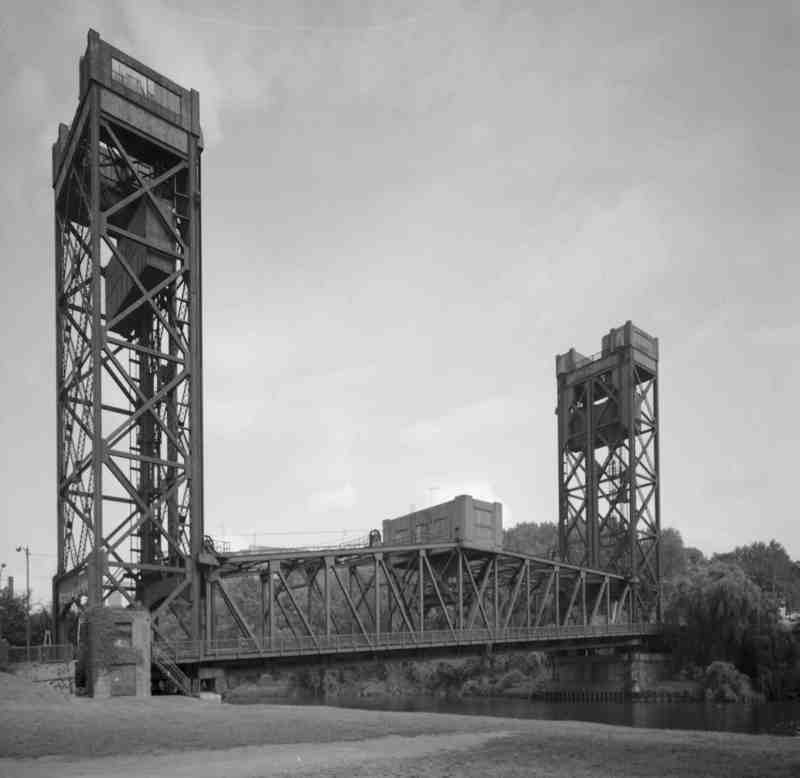Columbus Street Bridge

Anyone who has lived in Cleveland for a while knows that a certain rivalry exists between its east and west sides, separated as they are by the Cuyahoga River. What most people don't realize is just how far back in history the rivalry goes, or that in the 1830s the building of a new bridge over the river sparked violence between residents of Cleveland (east) and Ohio City (west).
By the 1830s, Ohio City—a separate city until it was annexed by Cleveland in the 1850s—was falling behind its more prosperous neighbor on the east bank of the Cuyahoga. Ohio City residents became enraged when a Cleveland syndicate that included Cleveland's future mayor John W. Willey constructed a bridge on Columbus Street in the Flats to connect the new Cleveland Centre and Willeyville subdivisions. The new bridge took a southerly route that bypassed Ohio City's main commercial district on what is now West 25th Street. Given that this new bridge was far superior to the floating bridge further north that had previously been the only span connecting the two cities, Ohio City rightfully feared a drastic decline in traffic and goods moving through their city. Incensed, they decided to boycott the bridge. Cleveland retaliated by removing their half of the old floating bridge.
On October 31, 1836, an angry mob of Ohio City residents marched to the Columbus Street Bridge intending to destroy it. Cleveland's Mayor Willey and a number of Cleveland residents met them and fighting broke out, leaving three men seriously injured before the County Sheriff put a stop to the violence. The courts eventually resolved the issue, allowing for both bridges to be opened to traffic.
The old Columbus Street bridge was replaced by an iron bridge in 1870. After that, a double swing bridge—then the world's first—took that bridge's place. Later, in 1940, WPA workers installed a steel lift bridge on Columbus Road. This bridge underwent a substantial restoration in 2013-14.
Speaking to your typical Clevelander it becomes clear that while the original Columbus Street Bridge may be long gone, the rivalry between the east and west sides of Cleveland remains firmly in place. But perhaps a bit less violently.
Images




